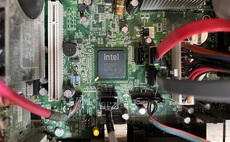AMD, STMicroelectronics and others to produce 64-bit server microprocessors based on ARM
Chip designer ARM has unveiled a new series of 64-bit microprocessors intended to drive the company into the server market. The launch comes a day after Intel's rival in desktop and server computin...
To continue reading this article...
Join Computing
- Unlimited access to real-time news, analysis and opinion from the technology industry
- Receive important and breaking news in our daily newsletter
- Be the first to hear about our events and awards programmes
- Join live member only interviews with IT leaders at the ‘IT Lounge’; your chance to ask your burning tech questions and have them answered
- Access to the Computing Delta hub providing market intelligence and research
- Receive our members-only newsletter with exclusive opinion pieces from senior IT Leaders




















